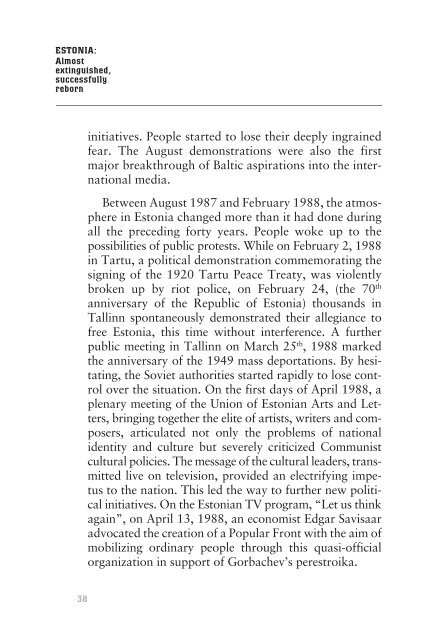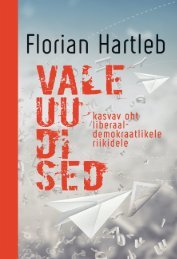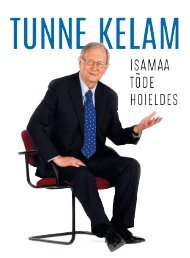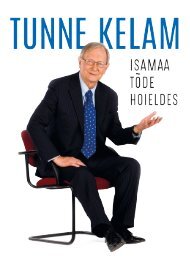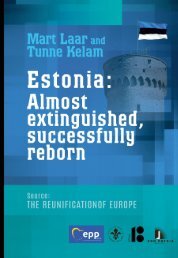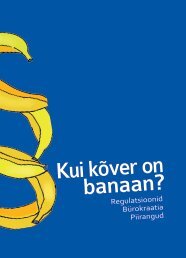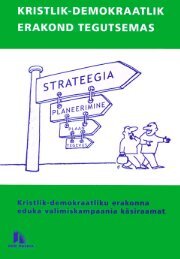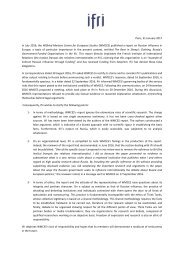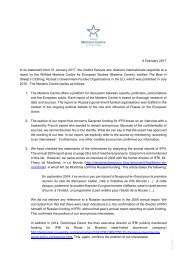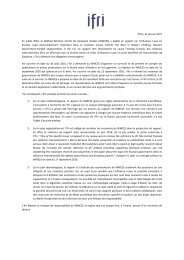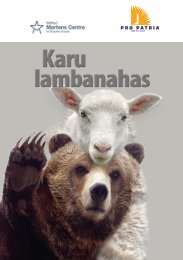Estonia: Almost extinguished, successfully reborn
The following text is the shortest possible review to help inform friends and guests from abroad about Estonia’s experience with foreign occupation and totalitarianism as well as its road to peacefully re-establishing national inde-pendence on the basis of democracy. Tunne Kelam Member of the European Parliament
The following text is the shortest possible review to help inform friends and guests from abroad about Estonia’s experience with foreign occupation and totalitarianism as well as its road to peacefully re-establishing national inde-pendence on the basis of democracy.
Tunne Kelam
Member of the European Parliament
You also want an ePaper? Increase the reach of your titles
YUMPU automatically turns print PDFs into web optimized ePapers that Google loves.
ESTONIA:<br />
<strong>Almost</strong><br />
<strong>extinguished</strong>,<br />
<strong>successfully</strong><br />
<strong>reborn</strong><br />
initiatives. People started to lose their deeply ingrained<br />
fear. The August demonstrations were also the first<br />
major breakthrough of Baltic aspirations into the international<br />
media.<br />
Between August 1987 and February 1988, the atmosphere<br />
in <strong>Estonia</strong> changed more than it had done during<br />
all the preceding forty years. People woke up to the<br />
possibilities of public protests. While on February 2, 1988<br />
in Tartu, a political demonstration commemorating the<br />
signing of the 1920 Tartu Peace Treaty, was violently<br />
broken up by riot police, on February 24, (the 70 th<br />
anniversary of the Republic of <strong>Estonia</strong>) thousands in<br />
Tallinn spontaneously demonstrated their allegiance to<br />
free <strong>Estonia</strong>, this time without interference. A further<br />
public meeting in Tallinn on March 25 th , 1988 marked<br />
the anniversary of the 1949 mass deportations. By hesitating,<br />
the Soviet authorities started rapidly to lose control<br />
over the situation. On the first days of April 1988, a<br />
plenary meeting of the Union of <strong>Estonia</strong>n Arts and Letters,<br />
bringing together the elite of artists, writers and composers,<br />
articulated not only the problems of national<br />
identity and culture but severely criticized Communist<br />
cultural policies. The message of the cultural leaders, transmitted<br />
live on television, provided an electrifying impetus<br />
to the nation. This led the way to further new political<br />
initiatives. On the <strong>Estonia</strong>n TV program, “Let us think<br />
again”, on April 13, 1988, an economist Edgar Savisaar<br />
advocated the creation of a Popular Front with the aim of<br />
mobilizing ordinary people through this quasi-official<br />
organization in support of Gorbachev’s perestroika.<br />
38


